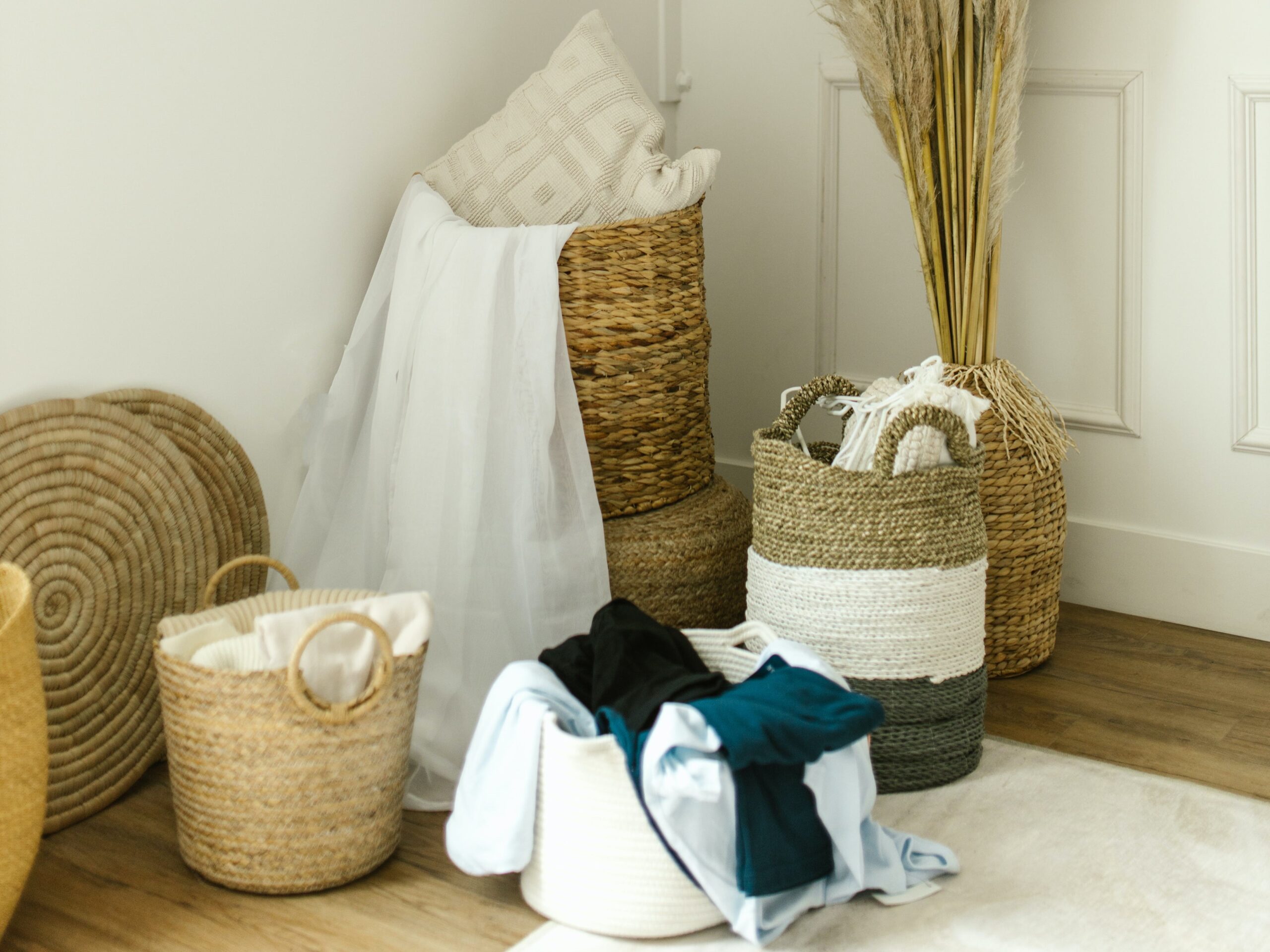The kitchen is the heart of a home and should be a place of ease and creativity, but all too frequently it turns into a site for chaotic disorder. Tupperware and food storage containers, with their mismatched lids and cluttered cabinets, are often the guilty parties. We will go through the fundamentals of organizing these essential kitchen supplies, but we will also look at creative organizing ideas that use baskets, Lazy Susans, pull-out shelves, and pegboards. Together, we can turn your kitchen into a well-organized haven that expertly combines functionality and design.
1. Declutter and Assess
Before venturing into the world of innovative storage solutions, it’s essential to start with the basics. Empty your cabinets, lay everything out, and assess your current situation. Discard damaged or mismatched containers, and consider donating those that rarely see the light of day. Creating a clean slate is the first step toward an organized kitchen.
2. Invest in a Matching Storage Set
To achieve both visual harmony and practicality, consider investing in a matching set of food storage containers. Choose a set that offers a variety of sizes, is stackable, and has tight-fitting lids. This foundational choice will make the subsequent steps in organization more straightforward and aesthetically pleasing.
3. Categorize by Size and Type
With your matching set in hand, categorize containers by size and type. Stackable containers and lids separately to maximize space and ease of access. Consider using dividers or drawer organizers to maintain order and prevent chaos.
4. Implement a System
Create a system that suits your preferences. Options like color-coding, lid storage, drawer dividers, and Lazy Susans will play a pivotal role in the efficiency of your kitchen organization. Experiment with different systems to find what works best for you and your cooking routine.
5. Labeling
Take your organization a step further by labeling containers. Clearly indicating contents and dates can be a game-changer, especially for those who prepare meals in advance or have leftovers. A label maker or masking tape and a permanent marker are simple yet effective tools for this purpose.
6. Optimize with Pull-Out Shelves
Now, let’s explore innovative solutions. Pull-out shelves are a fantastic addition to your kitchen cabinets. They provide easy access to the back of deep cabinets, making it a breeze to retrieve items without having to stretch or dig. Customizable to fit your container sizes, pull-out shelves ensure that no space goes underutilized.
Pull-out shelves can be particularly beneficial in lower cabinets where bending and reaching can be challenging. These shelves glide smoothly, allowing you to pull them out and access items at the back without disrupting the entire contents of the cabinet. Consider installing pull-out shelves in multiple cabinets to create a consistent and convenient organizational system.
7. Embrace the Lazy Susan Revolution
Lazy Susans are versatile and can revolutionize cabinet storage, particularly in corners. Using a Lazy Susan maximizes space and allows you to effortlessly access items in the back. With a 360-degree rotation, finding the right container or lid becomes a simple task. Available in various sizes, Lazy Susans adapt to your cabinet dimensions.
To make the most of Lazy Susans, strategically place them in corners or deep cabinets where items tend to get pushed to the back and forgotten. The rotation feature ensures that no corner of your cabinet is unreachable. Lazy Susans can be made of various materials, including plastic, wood, or metal, allowing you to choose one that complements your kitchen’s aesthetic while providing unparalleled functionality.
8. Pegboards for Versatile Storage
Pegboards, commonly associated with tools, find a new purpose in the kitchen. Mount a pegboard inside a cabinet door or on a vacant wall to hang lightweight containers, lids, or even kitchen tools. This adjustable and customizable solution ensures that your storage can evolve with your needs.
Pegboards offer a high degree of flexibility. Install hooks or pegs of different lengths to accommodate various container sizes. Containers can be hung directly on the pegs, and lids can be neatly organized in designated sections. The beauty of pegboards lies in their adaptability; as your collection of containers evolves, you can easily rearrange the pegs to accommodate new additions.
9. Incorporate Basket Storage for Aesthetic and Functional Appeal
Baskets add both charm and practicality to your kitchen organization. Open baskets on shelves corral smaller containers or lids, preventing them from scattering. Whether woven for warmth or wire for visibility, baskets contribute to an organized and stylish kitchen.
Incorporating baskets into your organization system adds a layer of visual appeal. Choose baskets that complement your kitchen’s color scheme and overall design. Woven baskets, for instance, provide a touch of warmth and a rustic charm, while wire baskets offer a more modern and industrial aesthetic.
10. Evaluate and Adjust
As you integrate these innovative solutions, be prepared to evaluate and adjust regularly. Experiment with different configurations to find what works best for your kitchen layout and storage needs. Remember, the goal is to create a system that complements your cooking habits and lifestyle.
Regularly assess the functionality of each organizational element. Pull-out shelves should slide smoothly without resistance, Lazy Susans should rotate effortlessly, pegboards should accommodate changes in container sizes, and baskets should remain both functional and visually appealing. This proactive approach to maintenance ensures that your organized kitchen remains a sustainable reality.
11. Utilize Vertical Space with Overhead Racks
When thinking about maximizing your kitchen’s storage potential, don’t overlook the often-underutilized overhead space. Overhead racks or hanging shelves can be installed to store lightweight containers, lids, or even cooking utensils. This vertical storage solution keeps items within reach while freeing up valuable cabinet and counter space. Opt for sturdy, well-secured racks that can handle the weight of your containers and lids without compromising safety.
12. Integrate Clear Containers for Visibility
Consider incorporating clear containers into your storage arsenal. Transparent containers allow you to see the contents at a glance, eliminating the need to open each container to identify what’s inside. This not only saves time but also prevents the frustration of searching for the right container. Clear containers work exceptionally well for pantry items like rice, pasta, or snacks, contributing to an organized and visually appealing pantry.
13. Designate a Recycling Station
Tupperware and food storage containers often come with lids that can be challenging to keep track of. To address this issue, designate a specific area in your kitchen for recycling lids. Use a dedicated basket or container to corral lids that don’t have matching bases. Periodically check this station to pair up lids with containers, discard any unmatchable pieces, and keep your collection streamlined.
14. Establish a Routine Maintenance Schedule
Maintaining an organized kitchen is an ongoing process, and establishing a routine maintenance schedule is key to its sustainability. Set aside time every month to reassess your storage system, declutter any unnecessary items, and make adjustments as needed. This proactive approach ensures that your kitchen remains a functional and stress-free space in the long run.
Mastering the organization of food storage containers and Tupperware in your kitchen involves a multi-faceted approach that blends fundamental principles with innovative solutions. From investing in a matching set and implementing a personalized system to integrating pull-out shelves, Lazy Susans, pegboards, baskets, overhead racks, and clear containers, the key is to create a customized and adaptable system that suits your lifestyle.
Regular maintenance, the utilization of vertical space, and designating specific areas for tasks like recycling lids contribute to a well-rounded organizational strategy. As you embark on this journey, remember that organization is a dynamic process that evolves with your needs and habits. With dedication and the right tools, your kitchen can transform into an efficiently organized space that not only makes your daily cooking routine a breeze but also adds a touch of style to your culinary haven. Embrace the joy of a clutter-free kitchen, and savor the enhanced functionality and aesthetics that come with it.


